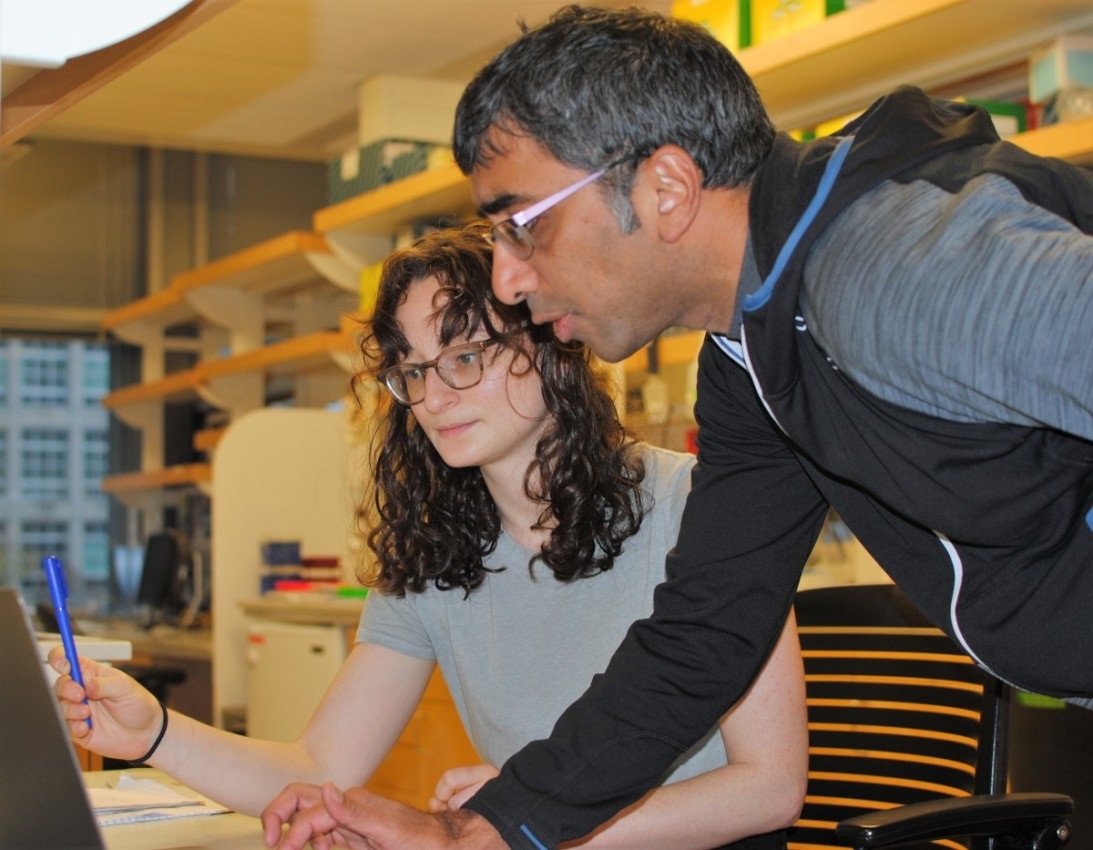February 7, 2023
Promising Young Scientist: An Invaluable Guiding Principle Leads Jenny Nathans to UW’s MD-PhD Program

Jenny Nathans is highlighted on the Brotman Baty Institutes’ Promising Young Scientist, where she discusses work in cell fate decision-making with BBI Scientific Director Jay Shendure: ‘Jenny has already established herself as someone who is smart, easy to work with, and is an excellent communicator.’
The phrase “kick the tires” refers to inspecting or testing something or someone to ensure that he, she, they, or it “meets the required or expected standard of quality,” according to the Free Dictionary.
Jenny Nathans devoted more than two years to kicking many tires at the National Institutes of Health before arriving at the University of Washington in 2020 to begin pursuing M.D. and Ph.D. degrees. She had graduated from Yale University in 2017 with a Bachelor of Science degree in Molecular Biophysics and Biochemistry, “but I was not convinced I wanted to do either a Ph.D. or an M.D.,” she said.
“I learned an important guiding principle when I was young from my parents, that when you are choosing a profession, you want to make sure you understand it thoroughly,” she said. “I wanted to ‘kick the tires’ and learn what it is like – day to day – in the life of a physician-scientist.”
In February of 2018, at the recommendation of her research adviser and mentor Dr. Joan Steitz at Yale, Nathans started working alongside Dr. Steven Cappell in the NIH Laboratory of Cancer Biology and Genetics, studying mechanisms of cell fate decision making. That work led to a first co-author article, “Cell-cycle inertia underlies a bifurcation in cell fates after DNA damage,” published in 2021 in the journal Science Advances.
Moreover, her work at NIH also provided observations and insights from physician-scientists, as well as one-on-one interactions with patients, convinced her to pursue both degrees.
“It was an opportunity that was quite fulfilling professionally,” she said. “I was able to both ask – and get answers to – big biological questions, as well as to engage with patients.”
The next step? Medical and graduate school applications. She applied to several throughout the U.S., with an eye toward her interests in how cells make different fate decisions and the trajectories of cells in response to stimuli. Moreover, the more she learned about the UW program, the more she was impressed.
Specifically, her interest in working with Dr. Jay Shendure, UW Medicine Professor of Genome Science and Scientific Director of the Brotman Baty Institute – and in his lab – started while working at NIH.
“Jay uses next generation genomics as its own microscope,” Nathans said. “And he conducts sequencing as its own microscope to understand how cells are taking different fate trajectories. For this area of science, Jay’s lab one of the best in the world.”
Nathans said she also was impressed with the UW Medical School and its admissions process.
“The school accepts people with non-traditional background,” she said. “I am learning alongside people with lots of different life experiences, very different from my own. “And in the process, I met students who seemed not just happy, but who also had a good work-life balance, which is important.”
Nathans, 27, also has had some interesting life experiences. She started choir in elementary school and, at age 13, began formal operatic singing lessons in opera. In 2016, she took a semester off to serve as a paid field organizer on Hillary Clinton’s presidential campaign in Cedar Rapids, Iowa, away, she said, from “cities of ivory towers” like New Haven, Connecticut, and Ann Arbor, Michigan, (where she was raised). For four months, she talked with potential Clinton supporters about their concerns for their lives, their families, and for the nation.
Earlier, between May and August of 2016 and also at the recommendation of Yale’s Steitz, she conducted research at Oxford University. By day, she examined the effects of transcriptional termination proteins on non-coding RNA; by night, Nathans listened to her colleagues predict the margins by which U.K. voters would reject Brexit, the referendum to leave the European Union.
Those two experiences likely cast aside any desire she may have had to pursue political polling as an avocation. Indeed, for anyone listening to Nathans discuss her M.D.-Ph.D. program it soon becomes quite evident that she is as determined as she is enthusiastic for the practice of medicine as well as research.
Shendure underscores this observation.
“Despite only having been at UW for a relatively short period of time, Jenny has already established herself as someone who is smart, easy to work with, and is an excellent communicator,” Shendure said. “She is always ready to help, engaged, and genuinely interested in the work of her fellow lab members.”
That “ready to help” observation extends beyond Ph.D. students in Shendure’s lab. Since December of 2021, Nathans has mentored a UW pre-med student through the University’s Alliance for Equal Representation in Medicine Community, a group of students and faculty “dedicated to increasing diversity in medical education with the purpose of graduating representative physicians for all patients and communities.”
“I am passionate about mentoring, knowing I am privileged to have had excellent mentors,” she said. “It is so important to share experiences and to help others through the challenges of rigorous classes and the pre-med experience, which is not fun for anyone.”
There is no doubt that, as an M.D.-Ph.D. student, Nathans also faces rigorous classes, along with devising theories and experiments on cell fate decision-making. But Shendure is confident she has three essential qualities for success.
“Jenny has bold, creative ideas, a passion for genomics and technology development, and a terrific work ethic,” he said. “And she is fantastic to be around.”